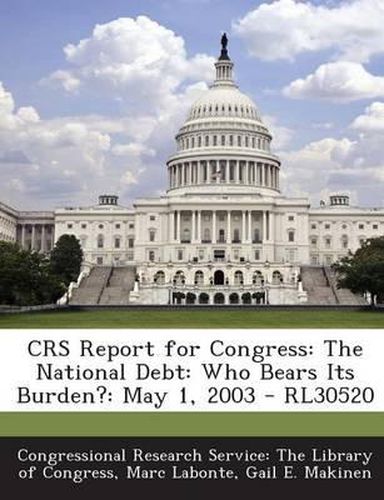Readings Newsletter
Become a Readings Member to make your shopping experience even easier.
Sign in or sign up for free!
You’re not far away from qualifying for FREE standard shipping within Australia
You’ve qualified for FREE standard shipping within Australia
The cart is loading…






The United States has been free of a national debt for only 2 years, 1834 and 1835. We began our existence as a country in 1790 with a debt of $75 million. It rose to $3.8 trillion in 1997. It rose to a high of 108.6% of gross domestic product (GDP) at the end of World War II; declined to a post-World War II low of 23.8% of GDP in 1974; and, then, rose to another high of 49.5% of GDP in 1993. The major cause of debt accumulation has been war. The United States has financed the extraordinary expenditures associated with war by borrowing rather than by raising taxes or printing money. This pattern was broken by the large budget deficits of the 1980s and 1990s which caused the national debt to rise substantially as a fraction of GDP during peacetime. While economists have long recognized that a national debt imposes an inescapable burden on a nation, they have debated whether the burden is borne by the generation who contracts the debt or is shifted forward to future generations. There has also been some controversy over the nature of the burden. The current consensus among economists is that the …
$9.00 standard shipping within Australia
FREE standard shipping within Australia for orders over $100.00
Express & International shipping calculated at checkout
The United States has been free of a national debt for only 2 years, 1834 and 1835. We began our existence as a country in 1790 with a debt of $75 million. It rose to $3.8 trillion in 1997. It rose to a high of 108.6% of gross domestic product (GDP) at the end of World War II; declined to a post-World War II low of 23.8% of GDP in 1974; and, then, rose to another high of 49.5% of GDP in 1993. The major cause of debt accumulation has been war. The United States has financed the extraordinary expenditures associated with war by borrowing rather than by raising taxes or printing money. This pattern was broken by the large budget deficits of the 1980s and 1990s which caused the national debt to rise substantially as a fraction of GDP during peacetime. While economists have long recognized that a national debt imposes an inescapable burden on a nation, they have debated whether the burden is borne by the generation who contracts the debt or is shifted forward to future generations. There has also been some controversy over the nature of the burden. The current consensus among economists is that the …